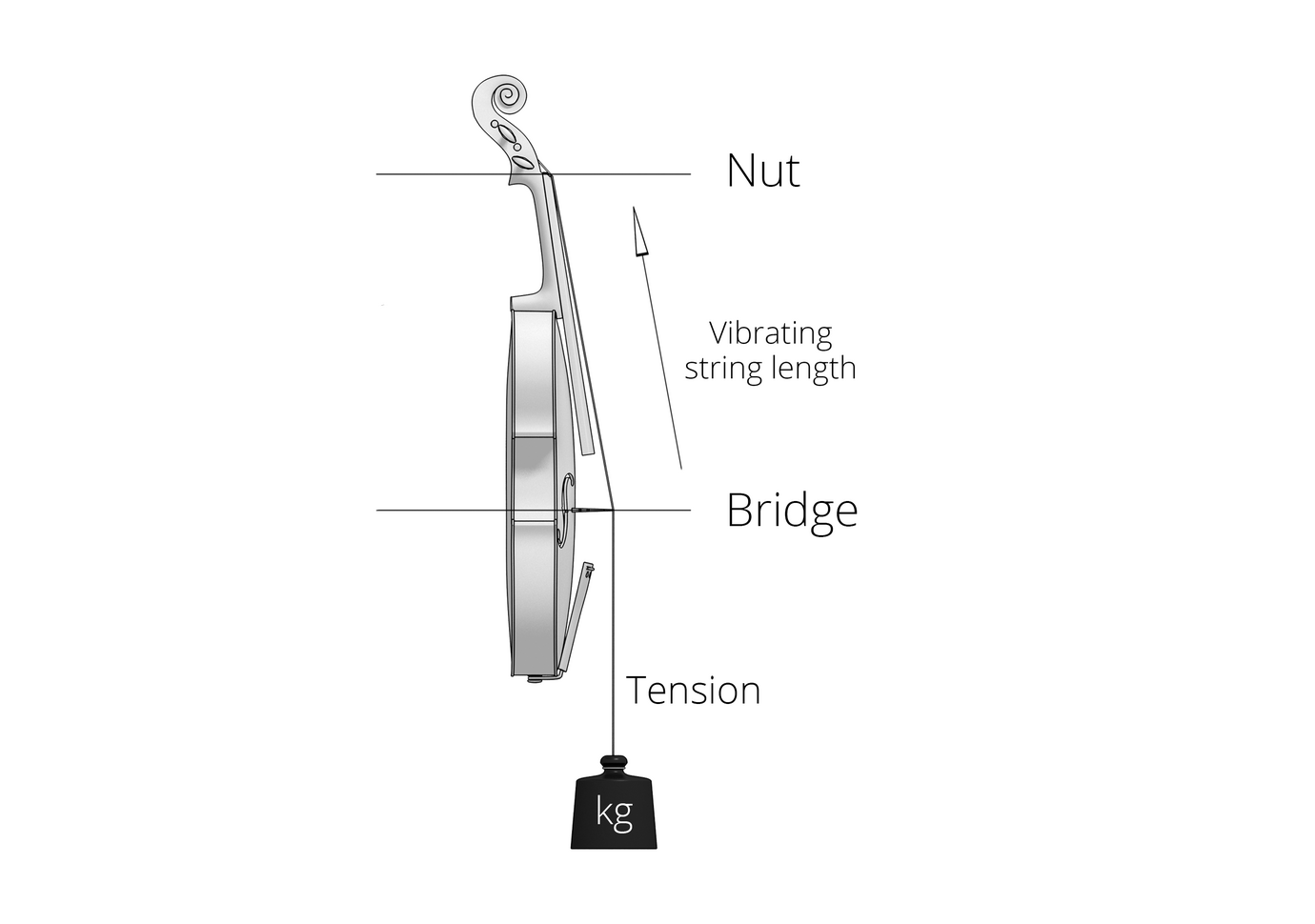Have you spent years mastering the art of string playing but still know little about the ideal way to handle your tools? Are you curious to learn more about the possibilities a high-performance string offers and do you want to optimize your performance in a few simple steps? Stringtelligence offers you an exclusive insight into the science of strings. Find widely unknown tips and tricks of the trade to perfect your sound and elevate your playing to an unexpected level! More than 20,000 words and 19 video tutorials in over 90 chapters: This is string know-how at its best!
How do I measure the vibrating string length
To choose the right strings and the correspondingly correct string tensions, you need to know the vibrating string length of your instrument, so that you do not overload or underload your instrument’s soundboard. In the event of overload or underload, the physical shape of the instrument, together with the sound and character of the strings, can suffer. Only by choosing a string tension appropriate to the instrument can optimal sound and haptic characteristics be developed for musician and tool.

The vibrating string length of a string instrument is the distance from the inside edge of the bridge to the inside edge of the nut.
The vibrating string length varies from instrument to instrument:
- For violins, the vibrating string lengths are between 32.5 cm and 32.8 cm on average.
- For violas, there are no clear standards, relationships between body lengths and vibrating string lengths can vary. It is possible to have a small body with a longer vibrating string length or a large body with a shorter vibrating string length. However, on average, the vibrating string lengths for violas are between 37 cm and 38 cm.
- Cellos have vibrating strings lengths of around 70 cm. Thomastik-Infeld also uses 70 cm as the vibrating string length for cello strings in its catalog.
- Similar to violas, the sizes and proportions are much less standardized for double basses. The current standard size is the 3/4 size, which corresponds to a vibrating string length of 103-106 cm. For a 4/4 double bass, a vibrating string length of 106-110 cm is usual, but there are also instruments outside these standards.
A summary of the vibrating string lengths:
Violin: 32.5 cm - 32.8 cm
Viola: 37cm - 38 cm
Cello: 69 cm - 70 cm
3/4 bass: 103 cm - 106 cm
4/4 bass: 106 cm - 110 cm
BACK

 ESPAÑOL
ESPAÑOL